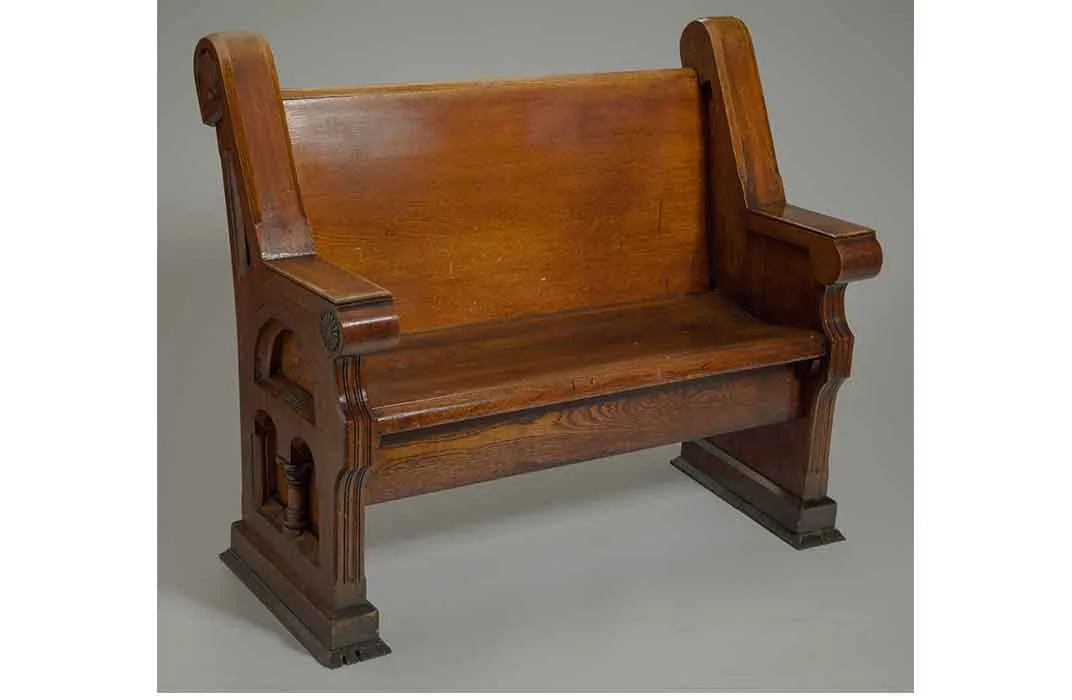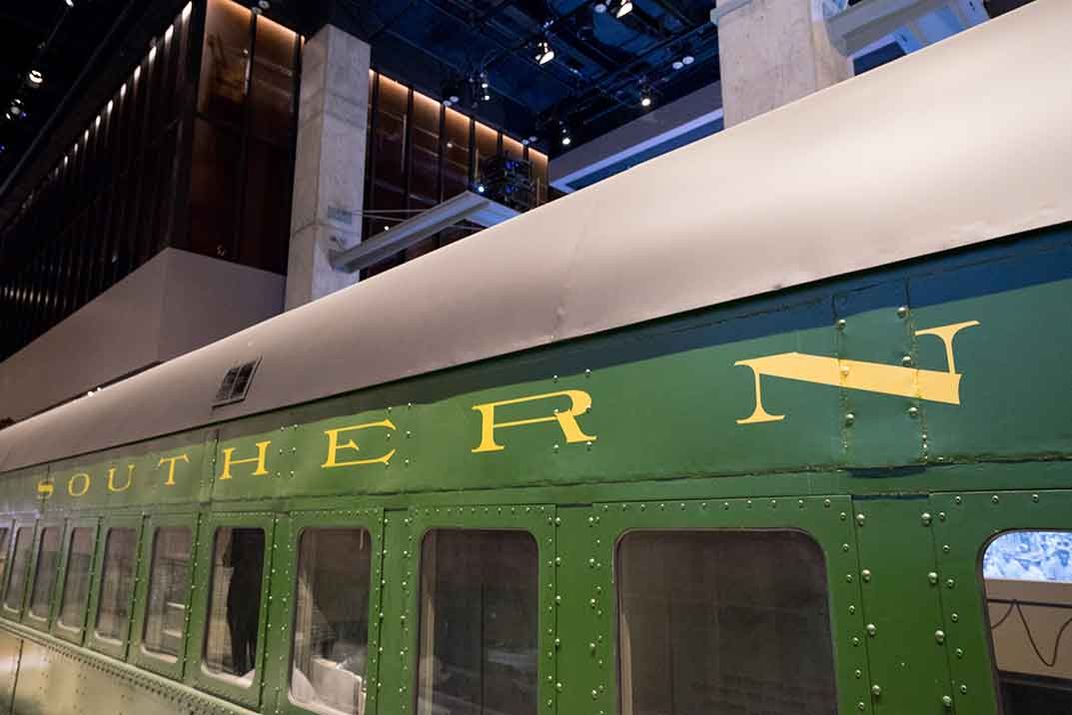In “Defending Freedom,” the Vanguards Who Refused to Be Suppressed Are Reunited
At the African American History Museum, this exhibition graphically conveys the trials and triumphs in the battle for Civil Rights
/https://tf-cmsv2-smithsonianmag-media.s3.amazonaws.com/filer/61/3b/613bab99-cf70-4afc-b5e6-43b5c45b1047/clarabrownweb.jpg)
The eyes of Spencer Crew gleam as he watches a maelstrom of people, moms and dads, grandparents and children ranging from infants to teens, navigate through the exhibition he curates at the Smithsonian’s National Museum of African American History and Culture.
“This is the time after the Civil War, as African-Americans are trying to figure out what not being a slave means, and the nation is trying to figure out what it is going to do with all of these new citizens in terms of their treatment and their rights as citizens of the United States,” says Crew, explaining why this part of the museum is vitally important to the story of the journey of blacks for self determination, equality and freedom. “What are the steps going forward?”
“Defending Freedom, Defining Freedom: Era of Segregation 1876 to 1968,” begins at the top of a long ramp rising out of the belowground galleries of the “Slavery and Freedom” exhibition.
A wooden dwelling marks the start. The Jones-Hall Sims House, built around 1875 by freed slaves in rural Montgomery County, Maryland, who were just learning the feeling of controlling their own lives, and land. Nearby is a statue of the former slave Clara Brown, who died in 1885. A powerful symbol of the resilience of blacks trying to find their way through the complicated maze of being free, Brown was born into slavery in 1800 in Virginia. She married and had four children, but the family was broken up and sold at auction.
“She was an enslaved woman who got her freedom after her family had been broken apart, and then she moved out to Colorado where she became a washerwoman who invests in land, becomes fairly well-to-do, and became a philanthropist,” Crew explains as families stop to take pictures and selfies with Brown and the house.
“She uses part of her money to try and reconnect her family back again. Unfortunately she is only able to find one daughter who she brings out to Colorado for a while before she passes away. But it’s a wonderful story about the importance of family, but also the success of African-Americans coming out of slavery.”

Another statue depicts Robert Smalls, a former slave who stole a Confederate ship in 1862, gave it to the Union Army, became a member of that army, and was elected to the U.S. House of Representatives in 1874. Some museum visitors, emotionally drained from navigating the exhibition about slavery, visibly revive a bit as they began walking through this part of the museum. Crew isn’t surprised, and notes that the stories told here are partly designed with that reaction in mind.
“At least initially, because you see some success and you see that enslavement doesn’t break the spirit. The end of enslavement does offer opportunities,” Crew explains, “although the work to take advantage of that is very hard to do because the opposition is very strong. But yes, I think the house and these two people help us understand the possibilities of people going forward after enslavement.”
Soon visitors are led to understand some of the challenges faced by African-Americans as a new society is created based on segregation, along with a climate of fear and intimidation against blacks. But the displays juxtapose the ugly and upsetting with the inspiring stories of African-Americans who fought back, sometimes at the cost of their lives.
“We have a number of very sad cases of people being attacked and killed just because they want to express their freedom,” says Crew. “We also talk about the rise of the Ku Klux Klan—we have a hood from that period—but at the same time we try to say that even with the rise of the Jim Crow laws and segregation you have push back from the African-American community.”
Visitors learn about Ida B. Wells, a prominent journalist, newspaper editor, Civil Rights activist and suffragette who wrote scathing pamphlets in the 1890s about lynching in the South, which she learned were based on the success of blacks rather than attacks on white women.
Stereotypical images and objects depicting African-Americans with bulging eyes and bright red lips are on view across from a wall of more positive day-to-day images of the black community.

There’s a picture of the Fisk Jubilee Singers from Fisk University, a chorale that began traveling in 1871 to raise money for the first American University to begin offering a liberal arts education to students irrespective of color. Visitors learn about the Historically Black Colleges and Universities (HBCUs), and the emphasis on getting an education and raising money for themselves. There’s the rise of local black institutions such as Quinn Chapel A.M.E. in Chicago, Illinois, (1844) the oldest African-American congregation in the city, which also supported the growth of Provident Hospital. It was the first African-American owned hospital in the nation.
But Crew stresses that the black community, then and now, did not have a monolithic view about the direction resistance to racism should take.
“There’s a film, with (Tuskegee University’s first principal, leading educator, orator and advisor to American presidents) Booker T. Washington, (NAACP co-founder, sociologist, historian and scholar) W.E.B. DuBois and Ida B. Wells all offering different approaches as to how African-Americans should move forward,” Crew says. “Washington argued that economics was the way to go, not pushing for political or social rights, and Wells and DuBois saying the opposite that you have to agitate and educate and push because nothing comes easily.”
In a gallery with headlines from black newspapers adorning the walls, as music from ragtime composer Scott Joplin playing, sits a gorgeous Tiffany-style clock.

It once held pride of place at the One Cent Savings Bank in Nashville, Tennessee, which opened in 1904. Now known as the Citizens Bank and Trust, it is the oldest continuously operating African-American bank in the nation. Black businessman came together to open the institution because they were unable to get loans elsewhere. In that same gallery, is a beautiful organ, once owned by an Pullman porter and donated to the museum by his family.
“I think it represents his desire to provide something more for his children, and to offer them a different view of life going forward,” Crew says.
Visitors next encounter the rise of national organizations such as the NAACP, and the intensifying battle for change as segregation and lynching increase around the end of the 19th century.

One traces the migration of blacks to the North from the South—known as the Great Migration during and after World War II. By 1919, about one million African-Americans had left the South. A second migration occurs during World War II and into the 1960s, as blacks found alternative job opportunities and places to live.
“Now you have African-Americans not only in the South, but also in the North pushing for change, and pushing society to see itself differently,” Crew explains. “Talking about migration is important to explain . . . how issues of race and change became more national than they ever had before.”
Then it’s into the 1920s and 30s, covering everything from the effect of soldiers returning from World War I after fighting from democracy aboard and finding that it still didn’t exist in much of the U.S., to the Harlem Renaissance.
The music of Duke Ellington and Fats Waller graced the nation, and there was the legendary poet Langston Hughes among many others including Zora Neale Hurston. Lines from Hughes’ iconic “I, Too, Sing America” are dramatically lit on the soaring wall overhead.
There’s a hat that belonged to Black Nationalist Marcus Garvey, jewelry once worn by Civil Rights icon, YWCA and National Council of Negro Women leader Dorothy Height, and the stories of many pre-cursors to the so-called modern Civil Rights Movement. That includes the Double V campaign—a battle for victory abroad and victory at home, the March on Washington movement by A. Philip Randolph, and "Don’t Buy Where you Can’t Work Campaigns" from Washington, D.C. to Chicago to Los Angeles.
“The modern Civil Rights Movement was built on the shoulders of those who came before them using similar tactics,” explains Crew. “World War II also reminds us of efforts underway before the 1950s. Soldiers who participated in the war see things differently when they return. Many argue the South was never the same after World War II.”

The period from 1945 to 1968, when Dr. Martin Luther King Jr. is assassinated, begins with a poignant picture of NAACP leader, World War II veteran and Civil Rights activist Medgar Evers getting married. The look of pride and anticipation in his eyes stops those who know the tragic history of his 1963 assassination in Jackson, Mississippi, where in front of his wife and children, he collapsed in his driveway after being shot in the back.
“You can see in their eyes the hopes and dreams going forward, and he comes back as a soldier and wants to register to vote and he and his brother are chased off at gunpoint. It starts his role and life as a Civil Rights activist,” Crew explains. “This wonderful picture talks about his hope for the future and then his determination to make the United States, the world different as a consequence.”
Visitors also learn about lesser-known activists who gave their lives in the struggle for equality, including Harry T. and Harriette V.Moore. The Florida teachers were fired for advancing the idea of equal pay for black teachers, and Harry Moore became very active in the NAACP. On Christmas Eve in 1951, someone bombed their house, killing them both. The museum has watches, a locket and a wallet that were recovered from the bombing site.
“This is a reminder of those fighting in the battle field and the sacrifices and the danger that comes with deciding to become a Civil Rights activist. We don’t always remember that enough, “Crew says.
There are artifacts here related to the historic Brown v. Board of Education case, and in a larger space covering the 1950s and 1960s, there’s everything from a tape recorder belonging to Malcolm X, a watch given to activist Bayard Rustin from Dr. Martin Luther King Jr., and shards of glass from the 16th Street Baptist Church in Birmingham, Alabama, where four little girls were killed in 1963.
There are highlights from the Selma March, including the visceral speeches of Civil Rights icon Rep. John Lewis (D-Ga). Lewis was nearly killed during that March, on what’s known as “Bloody Sunday” in 1965. He was also the youngest speaker at the 1963 March on Washington. In 1988, a year after Lewis was elected to Congress; he introduced a bill to create a national African-American museum in Washington, and gave an emotional speech at the museum’s opening on September 24, 2016.
But among the huge artifacts in the large room opening off of the final gallery of this exhibition, including the segregated Southern Railway car from the Jim Crow era, and a prison tower from the plantation-turned Louisiana State penitentiary in Angola, and the interactive replica of a lunch counter in Greensboro, S.C, where sit-ins were held, is a quiet little hallway.
There’s almost always a line there, and the people who walk into the room where it leads, where no photography is allowed, are clearly thoughtful. Some are in tears. Others are angry. The casket, in which Emmett Till was buried after his murder in 1955, sits in that room. Crew calls it one of the most powerful objects in the museum.
“He was murdered in Mississippi . . . murdered and maimed, and his mother decided to have an open casket. . . . As a consequence, it lets the nation see what is happening to African-Americans in the South, that very often is not reported and the funeral, which gets national press coverage, is the stimulus for a lot of people saying ‘we’ll no longer accept things as they are’ and ‘we’ll begin to push for change more powerfully,’” Crew explains.
“We see it as one of the most important, precious objects that we have in the museum to tell the story of the resistance, and the toll a lot of people paid to allow the Civil Rights Movement to move forward and lead to the rights we have today.”
"Defending Freedom" is a new inaugural exhibition on view in the National Museum of African American History and Culture. Timed-entry passes are now available at the museum's website or by calling ETIX Customer Support Center at (866) 297-4020. Timed passes are required for entry to the museum and will continue to be required indefinitely.
/https://tf-cmsv2-smithsonianmag-media.s3.amazonaws.com/accounts/headshot/allison.png)


/https://tf-cmsv2-smithsonianmag-media.s3.amazonaws.com/accounts/headshot/allison.png)